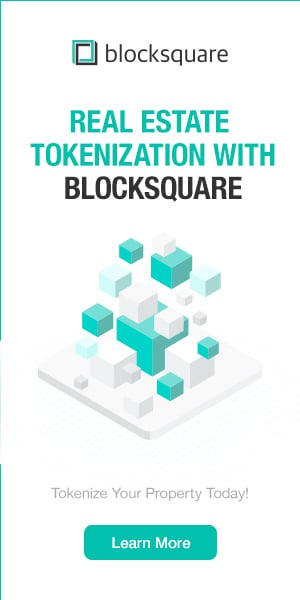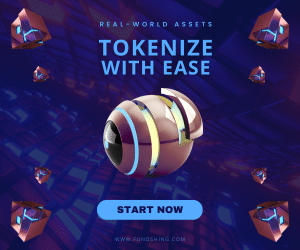The transformative promises of security tokens
– an interview with Harbor CEO Josh Stein, PART 2
The American security token issuance company, Harbor, is one of the pioneers of tokenization, and we are proud to publish this interview with Harbor’s CEO, Josh Stein. The interview falls into two parts, and if you want to read Part 1, please click here.
In Part 2, Josh Stein talks about to what extent tokenization will be able to democratise investments, reveals some of Harbor’s plans for overseas operations, and points at the vast potential of increased liquidity going forward.
Michael Juul Rugaard (MJR): There is a lot of talk about how tokenization may democratise investments. But so far, at least in the U.S., you must be an accredited investor to participate, for instance, in the T-REIT[1] that Harbor is currently working on [NOTICE: Updated April 2019: Harbor Cancels Security Token Sale]. Do you see it as a problem if only the top 2% of Americans can benefit from what we like to call the tokenization revolution? Is tokenization less democratic than we want it to be? And is there anything we can do about it going forward?
Josh Stein: These are good questions. Yes, it is accredited only. Those are the rules in the U.S. It is actually about 7% of U.S. adults who qualify as credited investors. It is still not huge, but 7% is a lot more than 2%. I wish those rules were not there. I wish anybody who wanted to invest could invest. On the other hand, wealth is not democratised, and so there are a lot more people who are not accredited than accredited. That is just the nature of capital markets today.
MJR: In Europe, for instance, the German company Neufund[2] currently works on an offering of security tokens which also allows non-accredited – or non-experienced – investors. I guess you probably know them?
JS: Yes, absolutely. And the rules vary from country to country.
MJR: In the U.S., you have some legal exceptions that have been widely discussed. Are they useful in terms of opening up opportunities for more people to invest?
JS: Well, in the U.S. they have what they call Crowdfunding rules. The problem is that it is not just a limitation on how much investors can invest, but there are also limits on how much money you can raise in total. Under the Crowdfunding regulation, you cannot raise more than $2 million, and most companies in most situations need to raise a lot more than that.
The other way you can go in the U.S. is what is called a “Regulation A” offering, of which there are two tiers. Tier 1 if you raise up to $20 million. Tier 2 if you raise between $20 to $50 million. The problem with Tier 2 is that the requirements are very much like an IPO, with a lot of expenses and ongoing headaches. So, if you are going to do a Tier 2, you might as well do an IPO for the most part.
MJR: And how about Tier 1 then?
JS: For a Tier 1 the requirements are pretty light. However, most of the people we talk to are looking to raise a lot more than $20 million. So, the problem with a Tier 1 is the limitation on the amount you can raise. The rules are different in different countries. U.S. rules are complex, and in Asian countries, in particular, the rules can get very complicated.
MJR: Do you think it would be possible in the future to try to harmonise some of these rules across different jurisdictions?
JS: I mean it is theoretically possible, but I don’t think that it’s going to happen any time soon. There is no incentive for the jurisdictions to cooperate. I mean, they can’t even cooperate on auto safety rules and pharmaceutical safety rules despite a significant push from powerful lobbies.
When you talk about democratisation, I do not think of it in terms of anybody can buy at a $100 check size. I mean, that is just not realistic, but we believe whatever that investment opportunity is, we can help folks syndicate it more widely and break it into smaller chunks.
And it is more democratic than it was before. For $20 million of equity in the building, typically, that would be one, two, at most, five investors. That would be a $4 to $5 million check. Now it’s a $20,000 check.
MJR: But do you see it as an issue that people must be accredited investors to participate in these offerings, like the real estate project in South Carolina that you are currently part of?
JS: No. We do not think of it as a major obstacle at all. We wish that everyone could participate. But the rules are what the rules are, and most of the investible money is amongst the accredited investors. The promise of security tokens, or digital securities, is to be able to do all the things you do today but to do them faster, cheaper and easier in ways that become transformative. What is going to make tokenization really valuable to investors and issuers, is when they can do a lot of things with them in ways that are more granular and cheaper than today.
Imagine a world in which you start to tokenize individual buildings. For example, take the case of class A office buildings in the New York area. Once a number of those office buildings are tokenized, an investor can do things that are not just possible today. If I think that downtown commercial real estate is going to do better than the rest of the New York area, I can “go long” on downtown investments. I can create a fund, and I can take one security token from each Class A building downtown. Or I can use the SET protocol to create one token that represents the underlying individual building tokens. That is functionally a custom, micro ETF. So, I now have a downtown class A ETF[3]. I can do the same for midtown and uptown. Using dYdX[4], I can take a leveraged long or a leveraged short position on any of those. That just cannot be done today. When I talk to real estate professionals and hedge funds, their eyes light up at being able to express their investment thesis so specifically.
MJR: Are you considering moving some of your activities to Europe?
JS: Yes, sure. We have developed a new technology, or format, where our brand is in the background, and the issuer’s brand is in the foreground so that we are just a tech provider. We can operate in any jurisdiction now because we are only a tech provider. It is up to the issuer to know those rules, and we work with them. But, yes, we could, for instance, service a German issuance tomorrow.
MJR: And in that case, you would be able to utilise the same regulations as Neufund does…
JS: That is exactly right. We are already talking to folks – including folks not in real estate – about working outside the U.S. I am talking to many startup companies that want to tokenize some of their equity. It is going to be a variety of asset classes and a variety of jurisdictions.
MJR: How big do you expect the market of tokenization and security tokens to be going forward? It is often said that an illiquidity discount of 20-30% is not unusual in several types of markets, and if tokenization can eliminate or reduce this discount that alone would be worth a lot of money…
JS: Yes. But the illiquidity discount varies across different investments, depending on the asset class, number of investors, and a whole lot of other stuff. So, 20 to 30% is a figure you often see in the academic literature, but when I talk to people, say, in the funds space, like private REITs, and non-traded REITs, I often hear the figures 40-60%.
MJR: Wow!
JS: Yes, it is double. But that illiquidity discount will not get eliminated. It just won’t. These are still private securities, so people are taking advantage of not having to go public. But the downside is that it is limited to accredited investors, and there is a maximum number of investors. Because of that, it will never be as liquid as the public markets. If you want public market liquidity, you have to file and go public. But it will be more liquid than it is today, so maybe that 40-60% goes to 20-30%. And then 20-30% goes to 10 -20%. I don’t know. Whatever it is, it will be better than today. And even if you reduce the illiquidity discount by 10%, that is a lot of value to be captured by investors, issuers, and others.
Another way to think about it is, today it is binary. Either you are public and highly liquid, or private and almost entirely illiquid. We now offer a way where you are semi-liquid. You are in-between while still retaining all the advantages of being a private company. So, it is bridging the two.
MJR: How do you see the market developing in the near future?
JS: I think things
will move slowly and then move very, very quickly. I think it is going to be
slow for a while because you have to get a critical mass of quality investments
and a critical mass of investors with capital before this starts to take off.
But once that happens, then it becomes a no-brainer. I mean, once investors can
see the liquidity is there, and they are not scared of the technology, then for
the issuers, there is no reason not to.
[1] T-REIT: Tokenized Real Estate Investment Trust
[3] EFT – Exchange Traded Fund
More Articles:
Mauritius issues guidance notes on security tokens
Max Property Group Crowdfunds Crowdfunding Platform With Security Tokens
You Might also Like
























